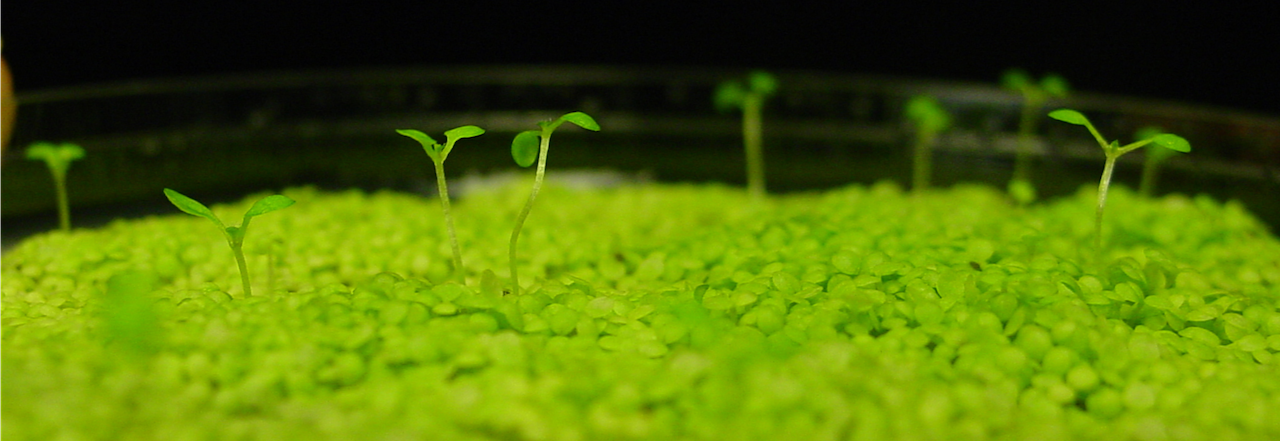Project 2. Research under this project seeks to understand the roles played by linear tetrapyrroles (bilins) in oxygenic photosynthetic species. Bilin biosynthesis pathways are present in all known oxygenic photosynthetic organisms. Previous studies in the model green alga Chlamydomonas reinhardtii demonstrated that the phytobilin pathway is required for photoautotrophic growth, despite its lack of phytochromes and phycobiliproteins. Our studies have established that bilins are needed to sustain chlorophyll synthesis, via their ability to bind to the GUN4 cofactor of magnesium chelatase (MgCh), the first committed step of chlorophyll biosynthesis in all oxygenic photosynthetic species. Our recent studies have established that GUN4:bilin complexes function to stimulate MgCh activity and stabilize the protoporphyrin-binding CHLH subunit against light-dependent turnover.
We hypothesize that CHLH stability is mediated by interaction with bilin-bound GUN4, which prevents light-dependent photosensitization of molecular oxygen by protoporphyrin bound to CHLH that leads to its inactivation and turnover in all oxygenic phototrophs. Our overarching hypothesis is that bilin biosynthesis is ubiquitous in eukaryotic algae because this stimulation and stabilization of MgCh is conserved. To test these hypotheses, we use a range of methods: phylogenetic analysis to identify proteins of interest; characterization of recombinant proteins using enzyme assays, X-ray crystallography, and NMR, absorption, circular dichroism, and fluorescence spectroscopies; reconstitution of bilin biosynthesis pathways in E. coli; and reconstitution of MgCh from a range of cyanobacteria and algae. There are three Aims of this project.
Aim 1: Understanding the mechanistic basis for bilin stimulation of Chlamydomonas MgCh. Under this Aim, we examine how bilins stimulate MgCh in Chlamydomonas. We will pursue structure determination for GUN4 with bound bilin and will examine the roles of conserved GUN4 residues in bilin binding. We have shown that CHLH1 is largely absent from Chlamydomonas cells lacking GUN4 and/or bilin biosynthesis, and CHLH1 is sensitive to oxidative damage with bound porphyrin. We will characterize the ability of bilin•GUN4 complexes to protect CHLH1 from oxidative photodamage in the presence of light, oxygen, and porphyrin.
Aim 2: Bilin biosynthesis and chlorophyll biosynthesis in eukaryotic algae. Under this Aim, we examine whether bilin binding by GUN4 and bilin•GUN4 stabilization of CHLH are conserved in other algae. We have identified possible co-evolution of GUN4 with bilin biosynthesis enzymes and demonstrated PCB binding in a dinoflagellate GUN4-ChlH fusion protein. We will identify the bilins produced in different algae and test the interactions of those bilins with their cognate GUN4 and CHLH proteins.
Aim 3: Origins of bilin biosynthesis. Under this Aim, we examine how photosynthetic organisms acquired bilin biosynthesis. We have identified “pre-PcyA” ancestors of the last enzyme in the PCB biosynthesis pathway. These sequences are found in clusters of genes in nonphotosynthetic bacteria. We have shown that one such cluster also has a bilin-binding phycobiliprotein. We will characterize the other proteins in this cluster and in related clusters, along with examining PCB•GUN4 effects on CHLH proteins from early-diverging cyanobacteria.
